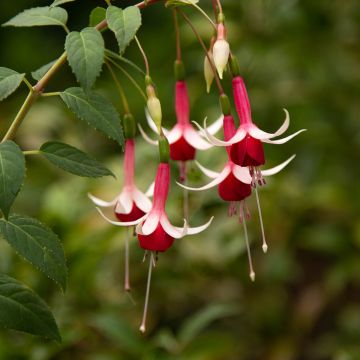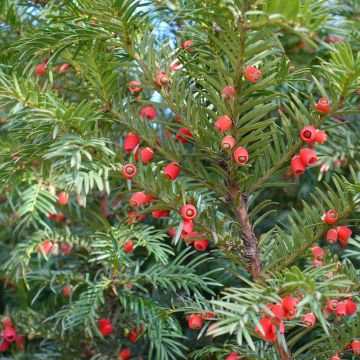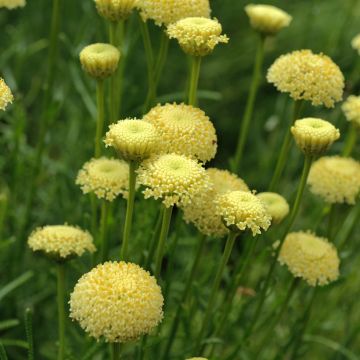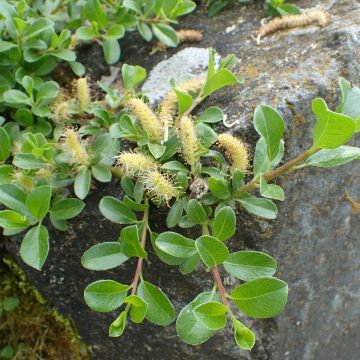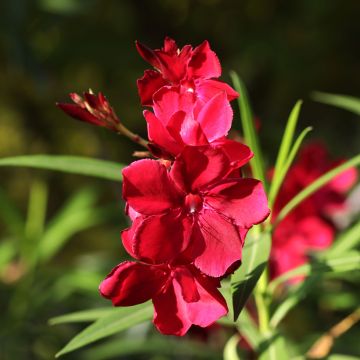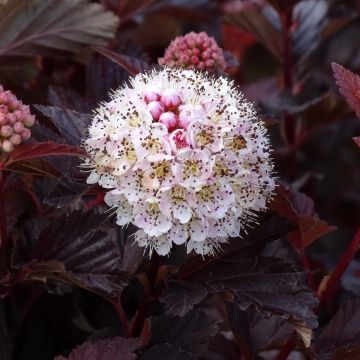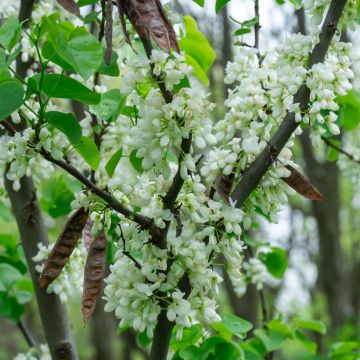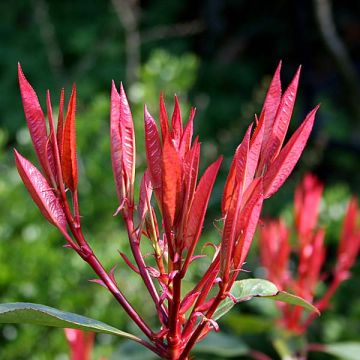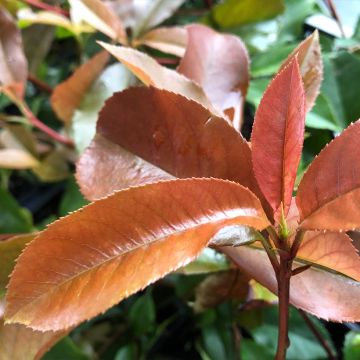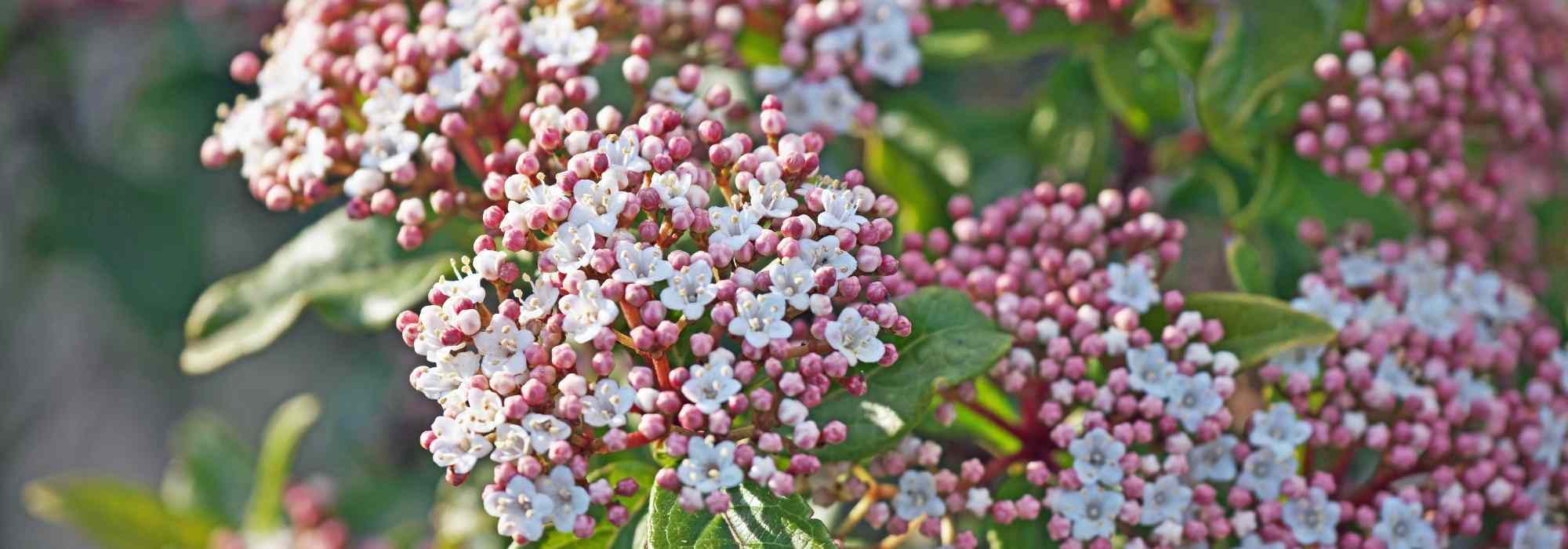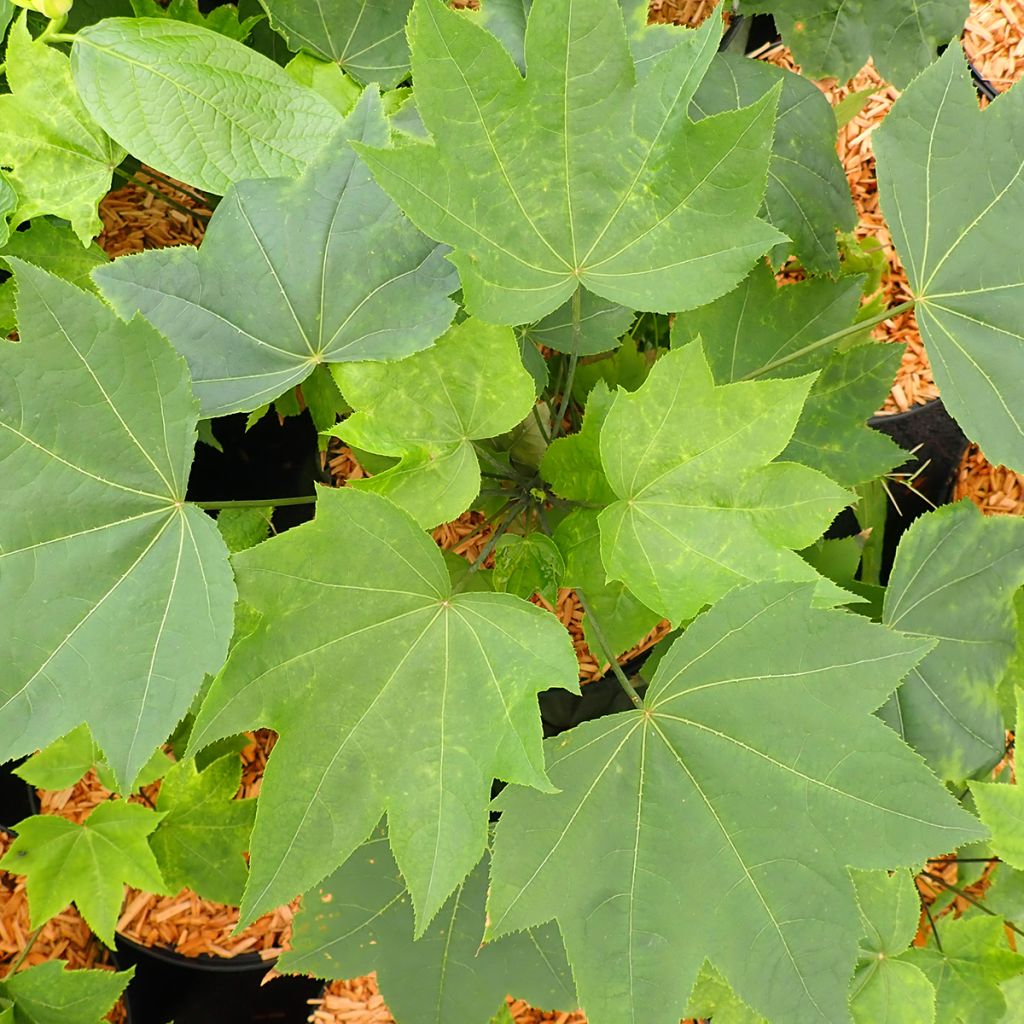

Kalopanax septemlobus Maximowiczii
Kalopanax septemlobus Maximowiczii
Kalopanax septemlobus maximowiczii
Castor-Aralia, Tree Aralia, Prickly Castor Oil Tree
Zeer mooie, gezonde exemplaren. Met zorg verpakt, en groter dan vermeld.
dirk, 01/05/2024
Special offer!
Receive a €20 voucher for any order over €90 (excluding delivery costs, credit notes, and plastic-free options)!
1- Add your favorite plants to your cart.
2- Once you have reached €90, confirm your order (you can even choose the delivery date!).
3- As soon as your order is shipped, you will receive an email containing your voucher code, valid for 3 months (90 days).
Your voucher is unique and can only be used once, for any order with a minimum value of €20, excluding delivery costs.
Can be combined with other current offers, non-divisible and non-refundable.
Home or relay delivery (depending on size and destination)
Schedule delivery date,
and select date in basket
This plant carries a 24 months recovery warranty
More information
We guarantee the quality of our plants for a full growing cycle, and will replace at our expense any plant that fails to recover under normal climatic and planting conditions.
Does this plant fit my garden?
Set up your Plantfit profile →
Description
The Kalopanax pictus Maximowiczii is a slow-growing small tree with an upright habit and few branches. Its overall appearance evokes certain tropical plants, making it famous for contemporary and exotic gardens in cooler regions. Its large, deeply lobed palmate leaves serve as a backdrop for the exuberant late summer flowering: large umbels of small white-green flowers form at the branches' ends, further enhancing this tree's tropical aspect. Much hardier than its appearance suggests, it prefers neutral to acidic soils that are sufficiently moist.
The Kalopanax belongs to the family Araliaceae, which includes many genera with decorative leaves. The "Panax" is particularly distinguished by its leaf blades: compound in the Acanthopanax sieboldii, palmate and imposing in the Oplopanax horridus, the record is held by the Tetrapanax papyrifera 'Rex' with leaves as large as umbrellas! As for Panax, it is a well-known perennial under its common name of ginseng. We could also mention Oreopanax, which resembles the famous Shefflera, another member of the Araliaceae family, as these different plants share a family resemblance.
Introduced to Europe in the late nineteenth century, the Kalopanax pictus (synonym Kalopanax septemlobus) comes from the cool forests of Japan, eastern Russia, China, and Korea, which explains its good hardiness. This tree reaches a height of about 6 m (20ft) with a spread of 4 m (13ft). It bears large palmate leaves approximately 30 cm (12in) in diameter, resembling those of Fatsia, a well-known plant from the same family. In the variety 'Maximowiczii', the leaves are more deeply lobed than in the species, enhancing their ornamental interest. Their beautiful dark green colour, slightly glossy, highlights the abundant late summer flowering. This appears in large umbels, approximately the same size as the leaves, or even more significant (50 cm (20in)), composed of small white-green flowers that are very melliferous. These are followed by small fruits measuring 4-5 mm (1in) in diameter and dark colour. In autumn, the foliage takes on a beautiful golden-yellow colour before the leaves fall, revealing thorny branches, just like the trunk. This plant is hardy down to -15°/-20 °C.
The Kalopanax pictus Maximowiczii is ideal for creating an exotic garden and can be paired with other tropical-looking plants, especially those with giant leaves like the Tetrapanax papyrifera 'Rex' or the Gunnera tinctoria. Hardy palms, such as the Trachycarpus fortunei and the Sabal nain, add a final flourish to the scene.
Report an error about the product description
Kalopanax septemlobus Maximowiczii in pictures
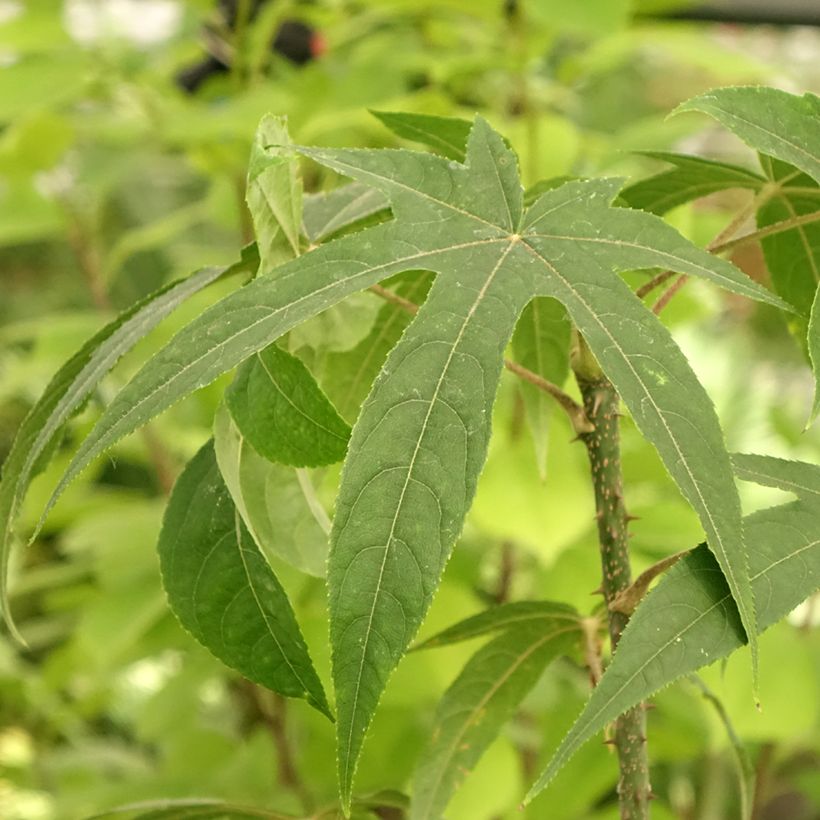

Plant habit
Flowering
Foliage
Botanical data
Kalopanax
septemlobus
maximowiczii
Araliaceae
Castor-Aralia, Tree Aralia, Prickly Castor Oil Tree
Cultivar or hybrid
Other Shrubs A to Z
View all →Planting and care
The Kalopanax pictus 'Maximowiczii' is a plant that thrives in coolness and light shade but also grows in the sun. It tolerates acidic, neutral, and even slightly chalky soils as long as they are rich and humus-rich, well-drained, but not dry.
Dig a planting hole 60 cm (24in) in all directions, and enrich it with planting soil with a bit of compost. Soak the root ball of the Kalopanax in a bucket until completely saturated (about fifteen minutes or more) before positioning it in the planting hole. Fill in around it and water thoroughly. Monitor watering during the first two years and then during the summer.
This specific research area does not require pruning except occasional cleaning and is not susceptible to diseases or insects.
Planting period
Intended location
Care
Planting & care advice
-
, onOrder confirmed
Reply from on Promesse de fleurs
Haven't found what you were looking for?
Hardiness is the lowest winter temperature a plant can endure without suffering serious damage or even dying. However, hardiness is affected by location (a sheltered area, such as a patio), protection (winter cover) and soil type (hardiness is improved by well-drained soil).

Photo Sharing Terms & Conditions
In order to encourage gardeners to interact and share their experiences, Promesse de fleurs offers various media enabling content to be uploaded onto its Site - in particular via the ‘Photo sharing’ module.
The User agrees to refrain from:
- Posting any content that is illegal, prejudicial, insulting, racist, inciteful to hatred, revisionist, contrary to public decency, that infringes on privacy or on the privacy rights of third parties, in particular the publicity rights of persons and goods, intellectual property rights, or the right to privacy.
- Submitting content on behalf of a third party;
- Impersonate the identity of a third party and/or publish any personal information about a third party;
In general, the User undertakes to refrain from any unethical behaviour.
All Content (in particular text, comments, files, images, photos, videos, creative works, etc.), which may be subject to property or intellectual property rights, image or other private rights, shall remain the property of the User, subject to the limited rights granted by the terms of the licence granted by Promesse de fleurs as stated below. Users are at liberty to publish or not to publish such Content on the Site, notably via the ‘Photo Sharing’ facility, and accept that this Content shall be made public and freely accessible, notably on the Internet.
Users further acknowledge, undertake to have ,and guarantee that they hold all necessary rights and permissions to publish such material on the Site, in particular with regard to the legislation in force pertaining to any privacy, property, intellectual property, image, or contractual rights, or rights of any other nature. By publishing such Content on the Site, Users acknowledge accepting full liability as publishers of the Content within the meaning of the law, and grant Promesse de fleurs, free of charge, an inclusive, worldwide licence for the said Content for the entire duration of its publication, including all reproduction, representation, up/downloading, displaying, performing, transmission, and storage rights.
Users also grant permission for their name to be linked to the Content and accept that this link may not always be made available.
By engaging in posting material, Users consent to their Content becoming automatically accessible on the Internet, in particular on other sites and/or blogs and/or web pages of the Promesse de fleurs site, including in particular social pages and the Promesse de fleurs catalogue.
Users may secure the removal of entrusted content free of charge by issuing a simple request via our contact form.
The flowering period indicated on our website applies to countries and regions located in USDA zone 8 (France, the United Kingdom, Ireland, the Netherlands, etc.)
It will vary according to where you live:
- In zones 9 to 10 (Italy, Spain, Greece, etc.), flowering will occur about 2 to 4 weeks earlier.
- In zones 6 to 7 (Germany, Poland, Slovenia, and lower mountainous regions), flowering will be delayed by 2 to 3 weeks.
- In zone 5 (Central Europe, Scandinavia), blooming will be delayed by 3 to 5 weeks.
In temperate climates, pruning of spring-flowering shrubs (forsythia, spireas, etc.) should be done just after flowering.
Pruning of summer-flowering shrubs (Indian Lilac, Perovskia, etc.) can be done in winter or spring.
In cold regions as well as with frost-sensitive plants, avoid pruning too early when severe frosts may still occur.
The planting period indicated on our website applies to countries and regions located in USDA zone 8 (France, United Kingdom, Ireland, Netherlands).
It will vary according to where you live:
- In Mediterranean zones (Marseille, Madrid, Milan, etc.), autumn and winter are the best planting periods.
- In continental zones (Strasbourg, Munich, Vienna, etc.), delay planting by 2 to 3 weeks in spring and bring it forward by 2 to 4 weeks in autumn.
- In mountainous regions (the Alps, Pyrenees, Carpathians, etc.), it is best to plant in late spring (May-June) or late summer (August-September).
The harvesting period indicated on our website applies to countries and regions in USDA zone 8 (France, England, Ireland, the Netherlands).
In colder areas (Scandinavia, Poland, Austria...) fruit and vegetable harvests are likely to be delayed by 3-4 weeks.
In warmer areas (Italy, Spain, Greece, etc.), harvesting will probably take place earlier, depending on weather conditions.
The sowing periods indicated on our website apply to countries and regions within USDA Zone 8 (France, UK, Ireland, Netherlands).
In colder areas (Scandinavia, Poland, Austria...), delay any outdoor sowing by 3-4 weeks, or sow under glass.
In warmer climes (Italy, Spain, Greece, etc.), bring outdoor sowing forward by a few weeks.






























